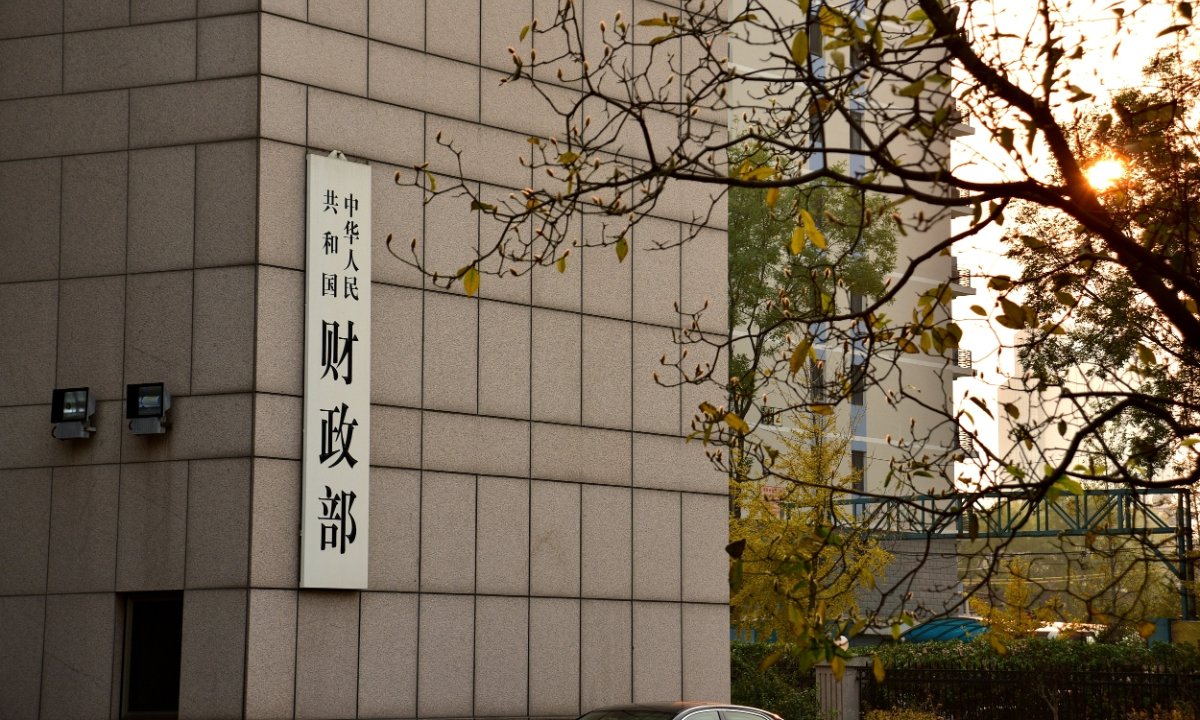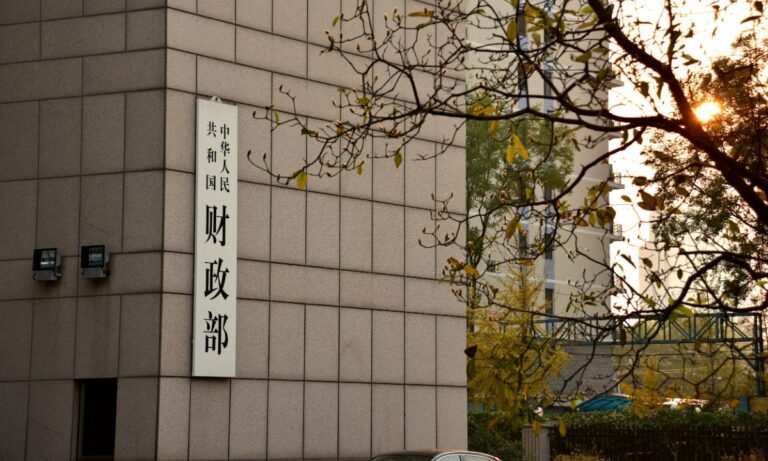
Ministry of Finance Photo: VCG
China on Tuesday completed the issuance of this year’s final tranche of ultra-long-term special treasury bonds worth 40 billion yuan ($5.5 billion), according to the Ministry of Finance. The move marks the completion of the 1.3 trillion-yuan issuance plan set in the 2025 yearly budget.
As of the end of the third quarter, China had issued a total of 1.23 trillion yuan in ultra-long-term special treasury bonds this year.
On October 10, a 50-year tranche worth 30 billion yuan was successfully issued. Compared with the issuance plan announced in April, the Ministry of Finance has slightly adjusted the fourth-quarter schedule — the final planned 30-year tranche originally set for October 10 was replaced with two tranches of different maturities, one for 50 years and another for 20 years.
“The adjustment in maturities reflects the Ministry of Finance’s flexibility and foresight in debt management,” said Li Xuhong, vice dean of the Beijing National Accounting Institute, according to the Economic Information Daily.
Li noted that offering both 50-year and 20-year bonds meets the needs of different investors, improves the yield curve, and enhances market resilience while optimizing the government’s debt structure and funding flexibility.
Li Changan, a professor at the Academy of China Open Economy Studies at the University of International Business and Economics, told the Global Times on Tuesday that such ultra-long-term bonds, especially those with maturities of 30 to 50 years, are typically held by institutional investors, which indicates a strategic, long-term approach to fiscal management. Shorter-term bonds, by contrast, offer greater liquidity and flexibility through secondary market trading. Ultimately, he said, the issuance demonstrates not only sound policy design but also the market’s enduring confidence in the steady trajectory of China’s economic growth.
This year’s issuance of ultra-long special treasury bonds has maintained strong fiscal support, with 800 billion yuan earmarked for major infrastructure projects and 500 billion yuan dedicated to advancing the “two new” policies — promoting large-scale equipment renewal and the trade-in of big-ticket consumer goods.
According to data from the National Development and Reform Commission (NDRC), the NDRC and the Ministry of Finance have recently allocated the fourth batch of 69 billion yuan in ultra-long special treasury bond funds to support the trade-in of consumer goods, completing the full-year allocation of 300 billion yuan. Meanwhile, the 800 billion yuan list of major infrastructure projects has been fully issued, along with 188 billion yuan in subsidies for equipment upgrades.
Funds from ultra-long-term special treasury bonds have bolstered major infrastructure projects and the “two new” initiatives this year, according to the NDRC. Investment subsidies have supported about 8,400 equipment renewal projects worth over 1 trillion yuan, while trade-in programs have benefited 330 million consumers and generated more than 2 trillion yuan in sales.
Li told the Global Times that the smooth issuance of ultra-long-term special treasury bonds reflects strong confidence in China’s long-term economic outlook. It signals improving expectations for sustained growth and underscores the government’s commitment to a more proactive fiscal policy. By moderately expanding the fiscal deficit and increasing bond issuance, China aims to address current and future economic challenges while maintaining overall fiscal stability.
Bian Yongzu, executive deputy editor-in-chief of Modernization of Management magazine told the Global Times that the issuance of long-term treasury bonds will strongly support China’s real economy by channeling funds into major national and infrastructure projects while easing short-term fiscal pressure on local governments. The low-cost financing allows more resources to flow into public welfare and industrial upgrading, strengthening the foundation for sustainable growth.
Bian added that long-term bonds play a key role in advancing China’s financial market reform by enriching investment options and improving the market-based formation of interest rates. The issuance, he noted, strikes a careful balance between fiscal needs and market demand, reflecting the growing sophistication and flexibility of China’s macroeconomic management.

